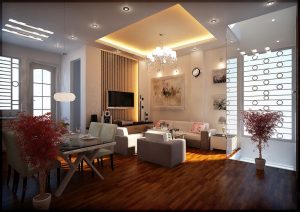Different Indoor Lighting Design Basics
 An appropriate indoor lighting design usually includes the right level of light for general purpose lighting, task lighting, decorative lighting, accent lighting, indirect lighting and spotlight/spotlight lighting. Proper indoor lighting design also includes the right amount of light for specific tasks such as reading, cooking, napping, exercising and more. Ambient lighting is an important factor to creating the kind of atmosphere that you wish people to experience whether they enter your home or business with you. It also helps people decide whether they should risk running across the street or not. It can provide mood lighting by focusing on one specific object or it can create soft romantic shadows on a space that would be perfect for a romantic dinner for two.
An appropriate indoor lighting design usually includes the right level of light for general purpose lighting, task lighting, decorative lighting, accent lighting, indirect lighting and spotlight/spotlight lighting. Proper indoor lighting design also includes the right amount of light for specific tasks such as reading, cooking, napping, exercising and more. Ambient lighting is an important factor to creating the kind of atmosphere that you wish people to experience whether they enter your home or business with you. It also helps people decide whether they should risk running across the street or not. It can provide mood lighting by focusing on one specific object or it can create soft romantic shadows on a space that would be perfect for a romantic dinner for two.
There are various kinds of indoor lighting design options available for homeowners and business owners who are interested in improving the look and feel of their homes and offices. One option is to use uplights in your home and business. Uplights are a modern invention that allows a ceiling to be illuminated by the light bulb above it, just like a window shade. You can get this type of lighting in many different styles, sizes and shapes. They look great installed in corners or over entryways. This way you won’t block anyone’s view of the area where you want to host a party or get together.
Another option for an indoor lighting design is to use a point-and-shoot camera. These cameras are used indoors but can be moved around as needed. By using a wireless sensor, the user can find the best place for the lens in terms of the type of fixtures that will be required. The wireless sensor can detect whether a person or animal is standing directly in front of the light source or not. If there is no glare at all, then the camera won’t have to illuminate anything, which makes it perfect for things like hallways.
Homeowners often make the mistake of thinking that all lighting systems need to have similar types of bulbs and fixtures. This is not true. In fact, there are differences between the types of bulbs and fixtures you need for indoor lighting designs. For example, if you are replacing your current light fixtures with energy efficient LED lights, you will need a different kind of bulb than what you currently have. There are also differences in the reflector that a lamp needs to be able to provide the amount of light that is needed.
Another way that you can lower the cost of your home improvement projects is to consider daylighting your home. By installing special fixtures around your house, you can lower your electricity bills by allowing more natural sunlight into your home. This will also help reduce energy costs for the overall efficiency of your home. There are specific designs for all types of exterior lighting on the market today that can allow you to create the light needed to better light your landscape without having to install expensive lights. Even with traditional exterior lighting systems, there are many different options for adding a touch of class to your exterior spaces. Adding landscape lights to highlight trees and statues can add a sense of formality or elegance to a home while at the same time lowering your monthly utility bill.
The design of your fixtures is only one aspect of your design plan. Many times the placement of the fixtures within a room is actually more important than the actual fixture itself. Fixtures should be placed in such a way as to create uniform levels of illumination without causing glare. You can often find this type of design in chandelier designs, which often use multiple metal prisms to disperse light evenly in a room. These types of fixtures are often used in business offices, but they are very practical for creating proper indoor lighting for the home. For more details on indoor lighting visit https://www.southfloridalightingdesign.com/miami-fl/.
